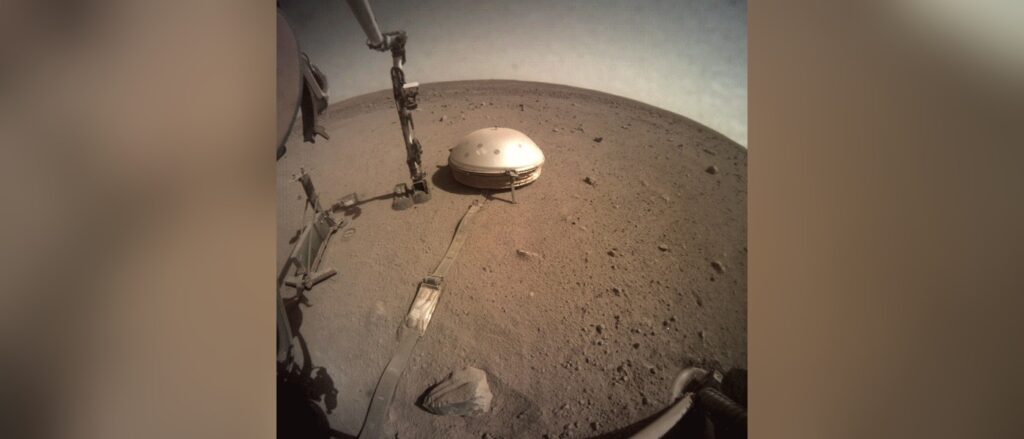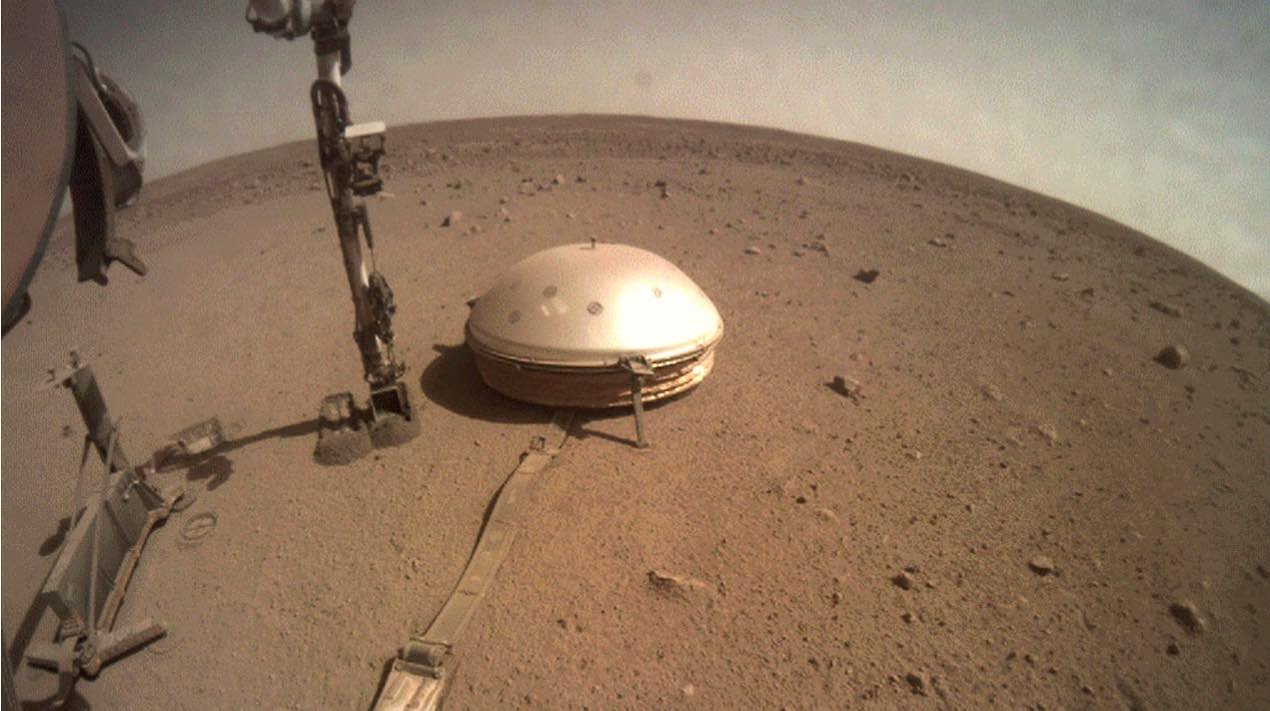In the first ever measurement of another planet’s core, seismography conducted over several Martian years have revealed the liquid metal core is softer than expected—more like a Mars-mellow than a Mars Bar.
While the recently arrived Perseverance rover has been hoovering up much of the Mars-related attention, a trio of recently published papers that measured the depth and composition of the crust, mantle, and iron-nickel core of the Red Planet—made by the 2018 NASA InSight lander—is looking to steal the limelight.
Using the same techniques in Earth seismography, geo-planetary scientists looked at data gained from InSight’s extremely sensitive seismometer to measure a series of “marsquakes.” The data they recovered help paint a picture of the progression of Mars from a planet that once had loads of liquid water and a stable atmosphere thanks to its magnetic field, to a world of frigid temperatures and rust.
There were challenges, and in what National Geographic described as a major analytical feat, it’s worth mentioning what needed overcoming.
- On Earth, seismography is done with thousands of instruments placed in different areas. InSight has one.
- With no plate tectonics to speak of, earthquakes on Mars are extremely faint and the strongest ever recorded would barely be noticed by humans—even if they were standing mere miles from the epicenter.
- Given the lack of additional instruments and the faintness of the tremors, the seismometer on InSight needed to be extremely sensitive, such that it would also pick up readings from the wind, as well as the creaks coming from minute molecular changes in the metal of the lander itself as it heats up and cools down every Martian day.
- The most seismically active region on Mars was half a planet away from the lander, and the planet’s core blocked any readings that might have reached InSight.
A big softy

Through all this, the team managed to get dimensions of the planet’s core, the upper mantle, and the Martian crust—all to within a few miles of accuracy.
“As a seismologist, you probably have one chance in your life to find a core for a planet,” says InSight member Simon Stähler, a seismologist at the research university ETH Zurich, in an interview with National Geographic.
Their principle resources were P-waves and S-waves, the same two tremor types that scientists measure on Earth and on the Moon. P-waves move a bit like wind on water, pushing things down, while S-waves vibrate and wriggle side-to-side, dislodging particles as they move.
CHECK OUT: See Incredible Photos and Hear Martian Winds From the Red Planet—Thanks to Perseverance Rover
These two waves move through different kinds of matter, giving a sort of “length and height” level of granularity. P-waves can move through solids, liquids, and gasses, while S-waves can move only through solids. Because the P-waves can go through a solid mantle into a liquid core, measuring their readings in a way similar to sonar gives you an idea of the depth of the core, while measuring the return speed of the S-wave gives you a depth at which the core begins, since it can’t pass through liquid, and returns surface-bound.
MORE: NASA Helicopter Sends Stunning Photos of Martian Landscape from 33 Feet Up – LOOK
By measuring a set of P-wave, S-wave, and then a fainter delayed S-wave a few hundred seconds later, the team determined that the Martian core is around 1,830 kilometers wide, slightly bigger than anticipated. This means that unlike Earth, which has an upper mantle and lower mantle, Mars has only one—about 500 kilometers deep.
“We inferred a mean core density of 5.7 to 6.3 grams per cubic centimeter, which requires a substantial complement of light elements dissolved in the iron-nickel core,” write the authors, which published a paper on each planetary layer, in the journal Science.
What it means
Estimated to contain carbon, oxygen, hydrogen, and sulfur, this softer-than-expected core and single-layer lithosphere could shed light on the creation and disappearance of the Martian magnetosphere which took place 3.7 billion years ago.
With a smaller lithosphere and a more porous core, convection currents would have created the potential for rapid cooling of the interior which National Geographic hypothesize as the genesis for the Martian magnetosphere.
The loss of the magnetosphere would have caused the original Martian atmosphere to dissipate, so understanding what planetary components might have led to that is key to understanding why Mars lost all her water and became a cold rusty desert.
Lastly, by mapping in detail the Martian crust, which consists of either two or three layers at a depth between 24 and 72 kilometers, the team found that radioactive, heat-producing elements were 13-21 times more plentiful than elsewhere, which could help form a working theory on why Martian volcanoes appear where they do on a planet that has no plate tectonic forces which would normally create them.
The Red Planet is revealing its secrets to us, forming a case study of planetary geosciences in conditions totally unlike those on Earth, and expanding our capabilities of understanding the most interesting heavenly bodies—planets.
PLANT the Far Out News in Friends’ News Feeds—Share This Story on Social Media…




















